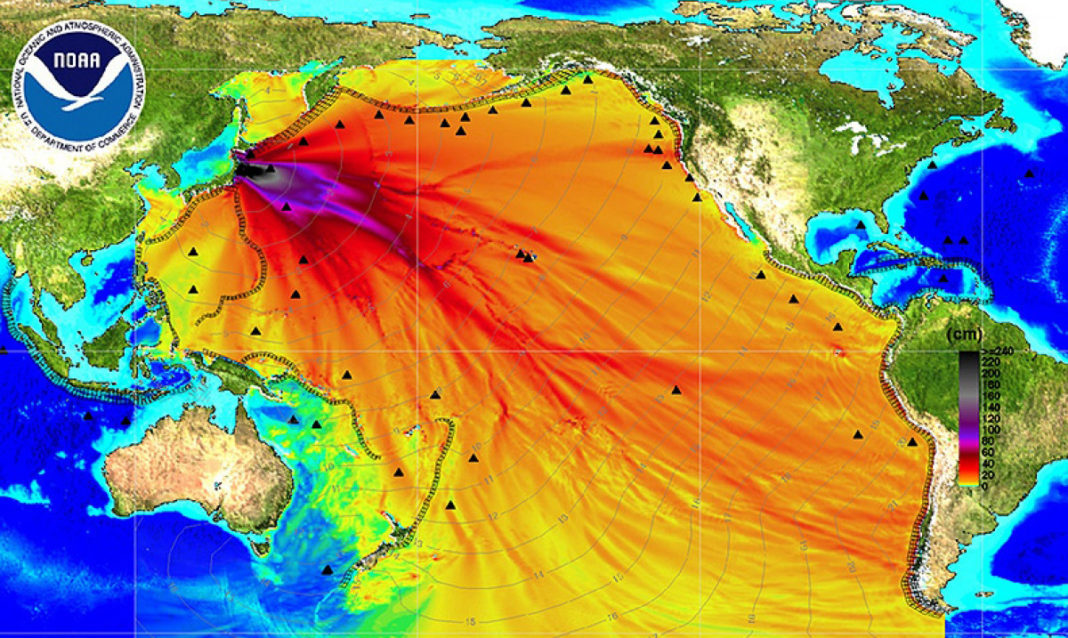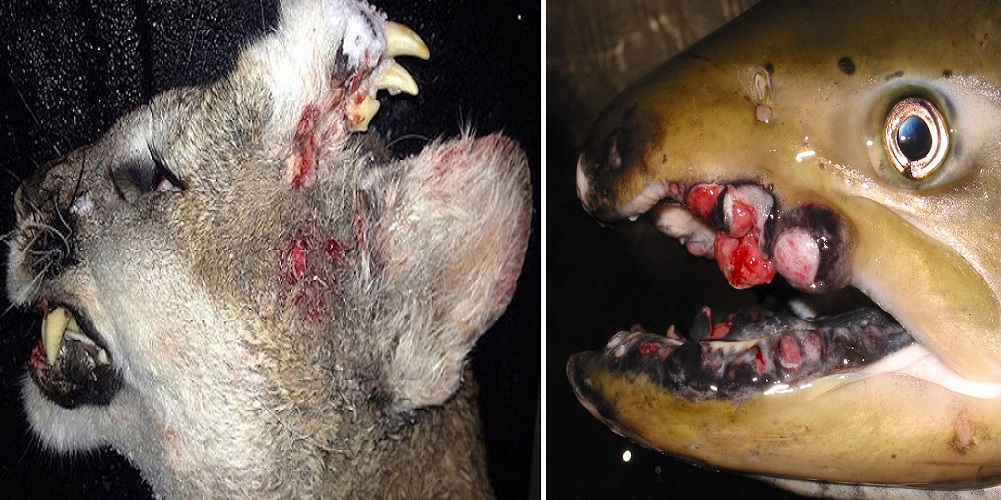Japan’s nuclear regulator has approved in principle a plan by Tepco, the plant’s operator, to discharge 1.25 million tons of treated cooling water containing tritium from the destroyed Fukushima Daiichi nuclear power plant into the Pacific Ocean in diluted form. Final approval is then expected after a public hearing period.
The contaminated water is one of the most acute problems at the nuclear plant, which was destroyed by a tsunami in 2011 after a megaquake. Because there will soon be no more room on the site for the more than 1,000 tanks in which the contaminated water has been stored for years. This is because around 130 tons of fresh cooling and groundwater are added every day, which has come into contact with the melted nuclear fuel in three reactors.
RELATED ARTICLE: Fukushima Has Now Contaminated Over 1/3 Of The Worlds Oceans (And It’s Getting Worse)
Tritium cannot be filtered out
The problem: The high-radiation water is collected and 62 isotopes are removed by a purification system. However, carbon-14 and especially tritium, a radioactive isotope consisting of three hydrogen atoms, cannot be filtered out. While tritium is not highly radiotoxic, it can be stored in the body.
The solutions to Tepco’s problem have been known for years: Evaporating the wastewater or draining it. Experts from the International Atomic Energy Agency (IAEA) and Japanese experts recommended discharge into the sea as a simpler and proven solution. This method has been used at other nuclear power plants around the world, although not on this enormous scale.
RELATED ARTICLE: Hell Hole on Earth Discovered at Fukushima
But Tokyo-based power utility Tepco and Japan’s government put off the decision for a long time. That’s because the recommended option met with resistance not only at home. It also exacerbated a conflict with neighboring Korea in foreign policy terms. Korea’s former left-wing government and civic groups there protested against the plan, fearing that the remote discharge would also contaminate Korean fishing grounds.
Eleven years after the triple meltdown at the damaged nuclear power plant, 77 percent of the Koreans who took part in a survey conducted by the Japanese Agency for Reconstruction still do not want to buy any products from Fukushima. That is by far the highest figure in Asia.
RELATED ARTICLE: UNVEILED: EU Commission Suspends Import Ban On Radioactive Fukushima Food
Highly diluted and to deeper sea regions
In Japan, as well as among Korean nuclear experts, concerns about radiation are seen as unfounded. This is because Tepco’s plan calls for the water to be highly diluted and slowly discharged into the ocean over 30 to 40 years. In addition, the water is to be channeled into the sea via a tunnel, which has yet to be built, about one kilometer from the coast in deeper regions.
In this way, Tepco wants to ensure that the radiation levels of the wastewater during discharge are only a fraction of the Japanese limits for drinking water. In the eyes of the IAEA, the Japanese are thus also meeting international requirements. This was stated by IAEA Managing Director Rafael Mariano Grossi at the end of April.
RELATED ARTICLE: Fukushima Radiation Makes Landfall On US West Coast – And It’s Only The Beginning
“Japan has made significant progress in its preparations,” Grossi said at the official launch of a report by a team of experts. “The task force is convinced that TEPCO and METI have identified the appropriate next steps for the water discharge planned for 2023,” he said.
The IAEA plans to follow up on further work. Tepco still has a lot of work to do, too. After the public hearing, the corporation must obtain a construction permit for the tunnel from the relevant municipality. In addition, the power producer wants to convince local residents and especially skeptical fishermen of the plan, who fear sales losses. According to the cited survey, however, the concern is unfounded. Without the discharge of the water, 13 percent of Japanese do not want to buy seafood from Fukushima; with the discharge, 14 percent do.
Related articles:
Radiation so High at Fukushima, Tepco’s Robots can’t Survive










